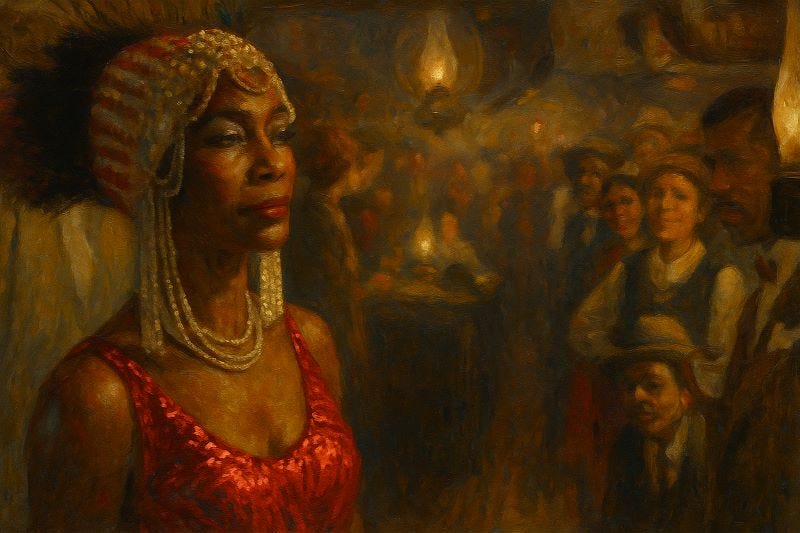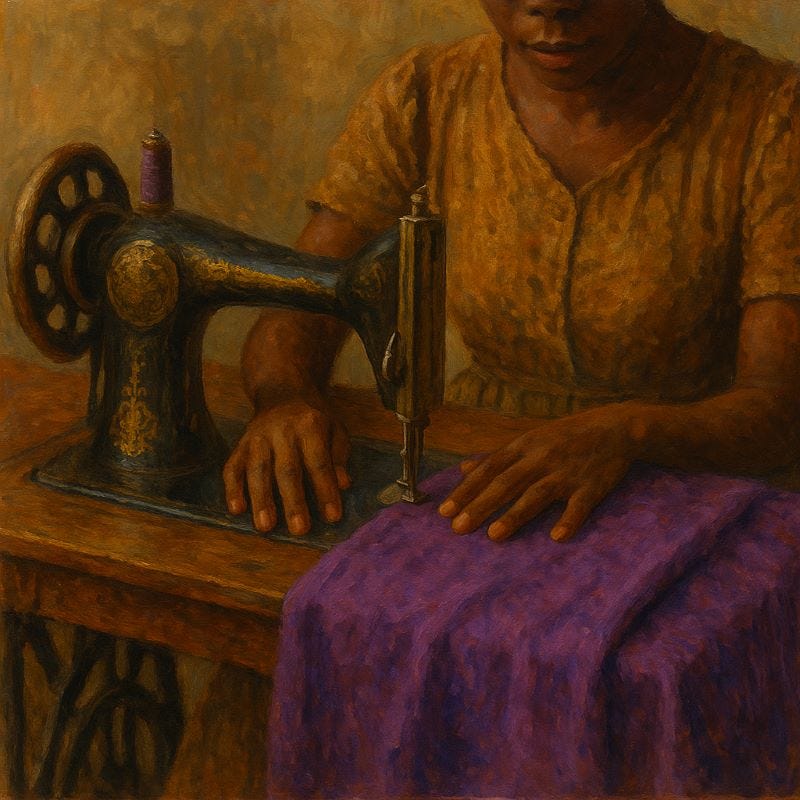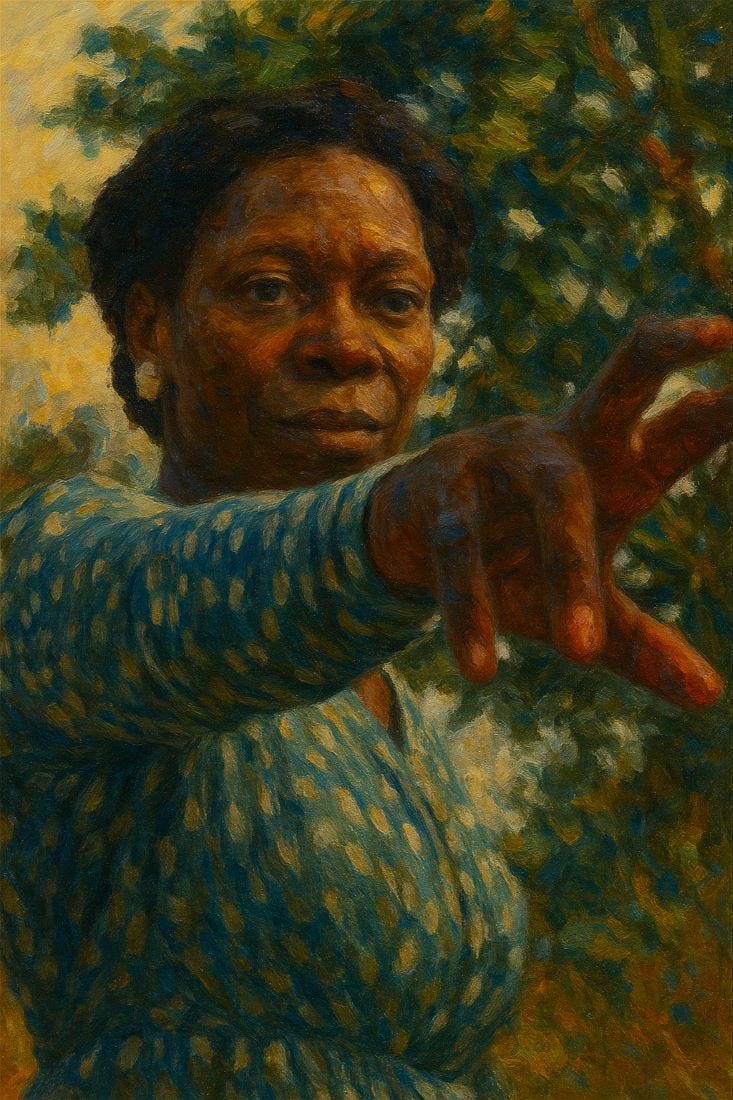The Color Purple Book Bust Down (1983): The Work Ain’t Done Until You Call Your Power Back...
She was silenced by force, broken by blood, and buried in plain sight. But the spirit kept the record—and the reversal came through perseverance and determination.
This wasn’t entertainment. This was resurrection in black and white.
Some books entertain. Others educate. But The Color Purple?
It invokes. It breaks silence. It resurrects voice.
This is not a tale of hardship—it is a spiritual initiation cloaked in narrative. Alice Walker didn’t just write characters. She documented ritual survival, ancestral mourning, and divine reclamation. Celie isn’t just a protagonist. She is an altar-bound vessel carrying the wounds of a lineage—and the proof that voice is power.
You don’t read The Color Purple casually.
You read it with your spirit open, your breath steady, and your hands ready to record the conjure codes hidden between the lines.
This is a text of transformation—where silence is a curse, writing is a petition, and every page is a step toward self-possession.
In The Color Purple, purple isn’t just a color—it’s a spiritual signal. It represents divine presence after pain, ancestral endurance, and the moment a silenced woman reclaims her power without asking. Purple is the color of blood remembered, not just shed—of bruises turned to beauty, of survival turned to sovereignty. When Shug says God gets angry when we overlook it, she’s revealing a conjure truth: the sacred hides in plain sight, even in suffering. For rootworkers, purple is resurrection. It means the work held, the spirit rose, and the pain became power.
WRITING AS PETITION: HOW CELIE CALLED POWER THROUGH PAPER
“Dear God.”
That phrase is not an introduction—it’s an invocation.
Each letter Celie writes is a petition, spoken from the floor of her pain. These aren’t diary entries. These are spiritual documents, written not for comfort, but for witness. In Hoodoo, when no altar is available, the mouth and the pen become sacred tools.
Celie doesn’t understand fully who she’s writing to—but that doesn’t matter. Spirit responds to the urgency of the wound, not the clarity of the theology.
She writes her way through suffering.
She writes her way through suppression.
And through that writing—she begins to remember she exists.
The ancestors respond to truth. That’s what these letters carry.
TIED TONGUE ROOTWORK: WHEN SILENCE IS A CURSE
“You better not never tell nobody but God. It’d kill your mammy.”
That is not just a threat. That is spiritual binding.
Celie begins her journey with a tied tongue—spiritually gagged by abuse, powerlessness, and fear. This type of energetic muting isn’t metaphor. In rootwork, when someone has been spiritually suppressed, their voice is sealed by trauma. And until that seal is broken, nothing can truly move.
Celie’s inability to speak is not weakness. It is evidence of ritual silencing—a condition that must be named before it can be reversed. For most of the book, she walks through life with a bound throat and a heavy soul. Her power is dormant but present.
When Shug Avery enters the picture, the seal begins to crack.
SHUG AS INITIATOR: THE ONE WHO UNLOCKS THE ALTAR
Shug Avery is not just a free spirit.
She is an initiator—a divine key sent to wake Celie up.
Where others demand silence and obedience, Shug teaches pleasure, truth, and visibility. She speaks what others won’t. She sings what others are scared to say. Her power doesn’t come from rules—it comes from spiritual alignment.
When Shug tells Celie that God wants her to notice the color purple in a field, she reframes divinity. No longer a sky-dwelling, patriarchal judge—but a present force of beauty and spirit, woven into every breath Celie takes.
This is theological reversal through feminine conjure. And it’s not fiction—it’s spiritual realignment.
SEWING POWER INTO CLOTH: THE BUSINESS AS CONJURE
Celie begins making pants, and it seems simple. It isn’t.
Each pair of pants is a ritual of reclamation.
She no longer waits for permission. She no longer accepts invisibility. She creates with her hands, charges her work with intention, and builds a life for herself—thread by thread.
In traditional Hoodoo, physical labor is often spiritual labor. Whether it’s stitching, cleaning, or gardening—when done with intent, it becomes a ritual of renewal.
Celie’s business is not commerce. It is a prosperity altar in motion.
THE BREAKING POINT: WHEN CELIE SPEAKS CURSE AND FREEDOM
“Until you do right by me, everything you think about is gonna fail.”
That is a reversal command. Spoken without hesitation. Spoken in full spiritual authority.
Celie isn’t just mad. She is unbound. Her voice becomes the weapon. Her word becomes law. She speaks from a place of fire and finality—the exact place true rootwork flows from.
There is no herb, no oil, no candle in that moment. But it is ritual complete. The curse breaks. The tables turn. Mister begins to fade, and Celie rises.
This is resurrection. Not through someone else’s prayer—but through her own voice, her own command.
LAND, LEGACY, AND THE RETURN OF POWER
When Celie inherits the house and land, it is more than property. It is ancestral restoration.
The land is her root. The home is her temple. The inheritance is her return to self. What was denied—voice, legacy, autonomy—is now in her name.
This is spiritual closure through physical possession. The altar is no longer internal—it’s in the very structure she lives in. Every step she takes across that land is a declaration: I belong here. I have a name. I am seen.
THE FINAL RETURN: NETTIE AND THE SPIRITUAL CIRCLE CLOSE
Nettie’s return is more than reunion. It is confirmation of answered petition.
Celie’s letters found their mark. Her pain reached Spirit. Her hope summoned justice. And when Nettie steps back onto her land, the ritual ends. The bloodline is reconnected. The silence is broken. The voice has become legacy.
In rootwork, closure doesn’t come with time. It comes when the spirit work is complete. Nettie returning is the final sign: the work held.
FINAL THOUGHT: THIS IS NOT JUST LITERATURE—THIS IS A TEACHING
The Color Purple is not a novel. It is a Hoodoo chronicle of transformation.
It teaches:
How silence operates as a curse
How writing can carry spiritual charge
How liberation is claimed, not granted
How voice becomes the altar
How resurrection is spoken—not begged for
If this post stirred something in your spirit, it’s because you recognized the truth:
Celie’s story is every rootworker’s initiation—pain, petition, reversal, and return.
🔔 Join the circle. This isn’t content. This is spiritual inheritance.
Every post is power. Every line is legacy.









